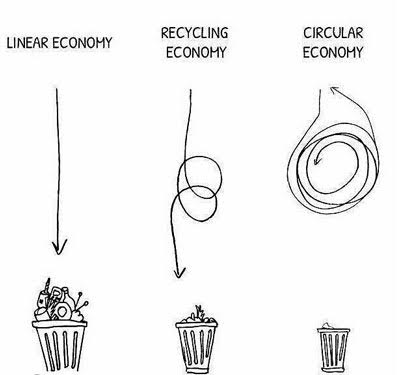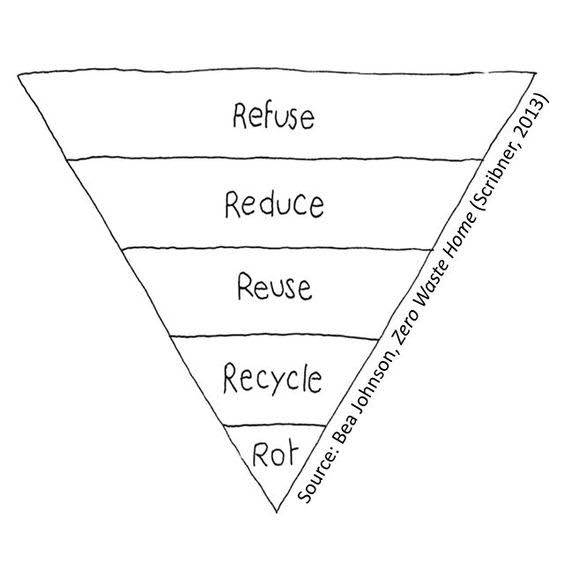The term Zero Waste started out as an industry term for manufacturing processes that resulted in no waste. They do this by feeding waste back into the manufacturing process in the form of fuel or raw material. Manufacturing that operates in this way is central to the concept of a circular economy — an economy based on reuse and recycling of waste to generate new products.

Over 10 years ago the term Zero Waste was adopted by blogger Bea Johnson in America to describe her efforts to reduce her family’s waste. She blogs about her efforts at zerowastehome.com, and in doing so popularised the term. Nowadays “Zero Waste” is typically used to describe a way of life or thinking that has waste minimisation at its heart.
Although the term “Zero” is used in “Zero Waste”, it is impossible for an individual to produce no waste at all. For this reason “Low-waste lifestyle” or “Low-impact lifestyle” are more accurate descriptions of a what is commonly known as the Zero Waste way of living.
Why are the alternatives for plastic?
When it comes to creating the unavoidable waste the Zero Waste community has a preference for paper, cardboard and infinitely recyclable materials, like glass and metal, over biodegradable or recyclable plastic. This is for a number of reasons.
- “Biodegradable” is not a legally defined term. Therefore biodegradable plastic does not have to comply with any set criteria. This means that plastics labelled as biodegradable might actually take up to 100 years or more to degrade and could leave a large percentage of micro-plastics and toxic residue in the soil.
- Plastic can only be recycled a limited number of times before it has to be sent to landfill or incineration. Therefore the recycling of plastic only pauses it journey to the landfill or incineration. Some plastics, like thermoset plastics, cannot be recycled at all.
The 5 R’s of Zero Waste
It is worth noting that, although glass and metal can be recycled infinitely, they are heavier than plastic packaging. This means that a product in glass will create more carbon emissions than the same product in plastic, particularly if imported from far. The same is true for paper or cardboard packaging. This is why the Zero Waste community seeks to minimise all forms of packaging and single-use-items, not just plastic. We do this by living by the 5 R’s:

- Refuse — don’t take anything you don’t need, even if it’s free!
- Reduce — aim to buy as little as possible and when you do buy something, buy it in as little packaging as possible.
- Reuse — aim to reuse what you have, including packaging instead of disposing of it.
- Recycle — if you can’t avoid, reuse or repair something, only then recycle.
- Rot — or compost it and give value resources back to the Earth.
If you have any more doubts about Zero Waste and how to achieve it step-by-step, check out this talk by Bea Johnson: